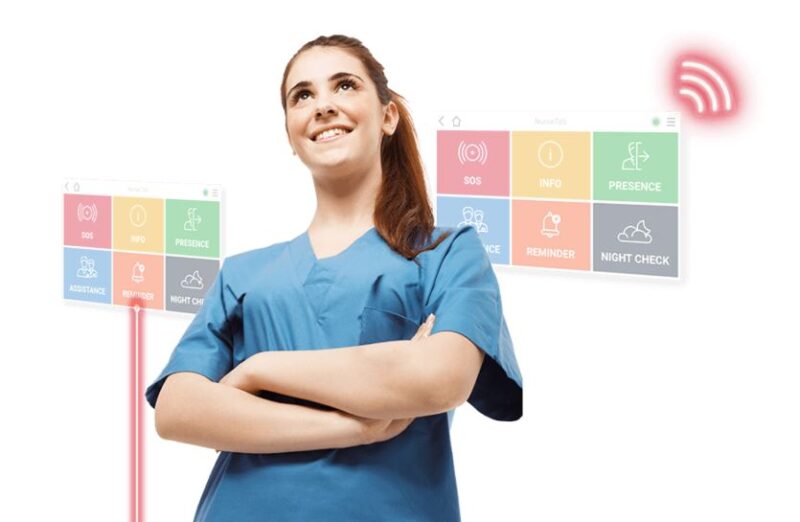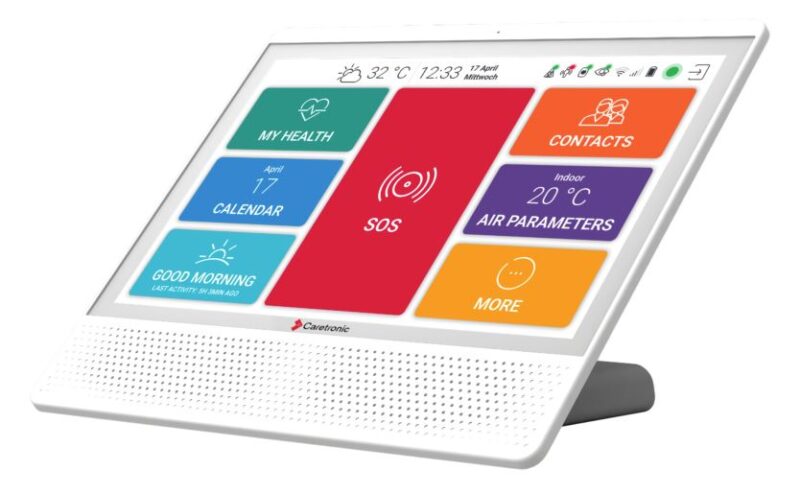Nurse call systems wireless solutions enhance staff efficiency and satisfaction. Medical facilities are dynamic environments that operate around the clock, and even seemingly small solutions like NurseCare can have a significant impact on daily productivity, workflow, and overall staff morale. These systems help ensure the safety of both patients and personnel while reducing the workload on healthcare staff. By digitalizing routine administrative tasks, they alleviate stress and improve the overall quality and efficiency of care delivery.
Thoughtfully managed and carefully selected equipment, along with patient calling systems, helps prevent response delays and ensures that staff remain aware and responsive, allowing them to focus on patient-centered care. Nurse call button systems streamline communication and deliver digital precision, enabling faster response times, improving care quality, and minimizing alarm fatigue.

Healthcare Facilities Prefer Wireless Solutions for Better Care and Staff Support
Patient calling systems have a significant impact on the medical environment. Calm and focused spaces are made possible through clear communication between staff and patients. By establishing a reliable and direct connection, a call system helps prevent confusion, reduces unnecessary back-and-forth, and saves valuable time. It enables caregivers and other personnel to prioritise effectively and respond with confidence.
Implementing nurse call button systems enhances coordination and accountability. Increased visibility reduces miscommunication and prevents tasks from being missed or duplicated. These systems provide nurses with structure, helping them plan and execute their duties more effectively. Predictability is one of the key factors in maintaining a calm workplace, as it brings consistency to operations while transforming communication, administration, and management.
One of the main sources of disruption in medical settings is noise. Excessive movement and constant alarms can elevate stress levels and lead to desensitisation. This can be prevented through selective communication, which limits unnecessary noise, helps staff prioritise alerts, and fosters a quieter, more focused environment.
Patient Calling Systems Prevent Personnel Alarm Fatigue
Nurse call button systems are ideal for emergencies. Alarms, signals, and sensors work together to ensure patient safety and provide timely, appropriate care. In dynamic environments like hospitals, these auditory and visual alerts are constant and often overlap. Each alarm requires a cognitive decision, whether to respond, delegate, or ignore. Over time, repeated alerts can lead to desensitisation, resulting in alarm fatigue, which reduces focus and compromises care quality.
Noise reduction plays a key role in minimising auditory and visual fatigue. To create a calmer and more manageable soundscape, many hospitals have adopted nurse call systems wireless technology. By routing alarms, notifications, and emergency calls to personal devices and central hubs, these systems streamline communication across the facility. Intelligent alert filtering helps prevent alarm overload, allowing staff to respond more efficiently and prioritise care effectively.

Nurse Call Button Systems Revolutionised Patient–Nurse Communication
Nurse call systems wireless and wired hybrid solutions ensure both flexibility and mobility in use. They feature an effective, adaptable, and reliable design that allows for simple installation and seamless integration. At Caretronic, we create equipment designed to help patients, healthcare personnel, and visitors feel secure and at ease within medical environments. Our accessible, durable, and stable solutions significantly reduce the risk of unattended emergencies, enhance safety, and improve overall workflow efficiency.
By integrating nursing documentation with care management, we have automated routine medical procedures and reduced staff stress. This enables personnel to concentrate on patient care while also lowering costs, digitizing maintenance tasks, and creating added operational value. Patient calling systems like NurseCare are based on IP technology and are compatible with any healthcare institution. As the most flexible modular solutions on the market, they are DIN VDE certified, ensuring the highest standards of safety and reliability.

How Can Hospitals Use Data from Patient Calling Systems for Continuous Improvement?
Nurse call systems wireless, as well as wired versions, help collect valuable data. Each time a patient presses a button, an event is recorded, capturing details such as who initiated the call, when it occurred, the reason for the call, response time, and the actions taken afterward. When analysed, this information becomes a powerful dataset for understanding patient needs, staff workload, and operational inefficiencies. When implemented effectively, call systems can enhance the patient experience, support safer care delivery, and inform data-driven operational decisions.
Hospitals adopting modern alert solutions are increasingly choosing nurse call systems wireless for their faster response times. These systems help identify patterns in patient needs and notify staff before delays escalate into risks. Analysing these trends enhances safety and prevents communication overload. With proper evaluation, hospitals can also pinpoint categories of calls that may be reduced through workflow improvements or patient education.
Leveraging Nurse Call Button Systems for Better Hospital Management
Nurse call systems wirelessly enable caregivers to respond promptly to patient requests across multiple wards. Hospitals are complex and fast-paced environments where a structured, disciplined framework is essential. A high-quality communication system provides multiple benefits, including the ability to capture real-time data that hospital executives can use to support lean management practices.
By leveraging data to improve workflow and address patient demand, healthcare institutions can identify sources of delay and inefficiency, ultimately reducing wait times and improving operational flow. Lean management depends on visibility and data transparency, and regular performance reviews help align outcomes with targets, reinforcing both accountability and productivity.

